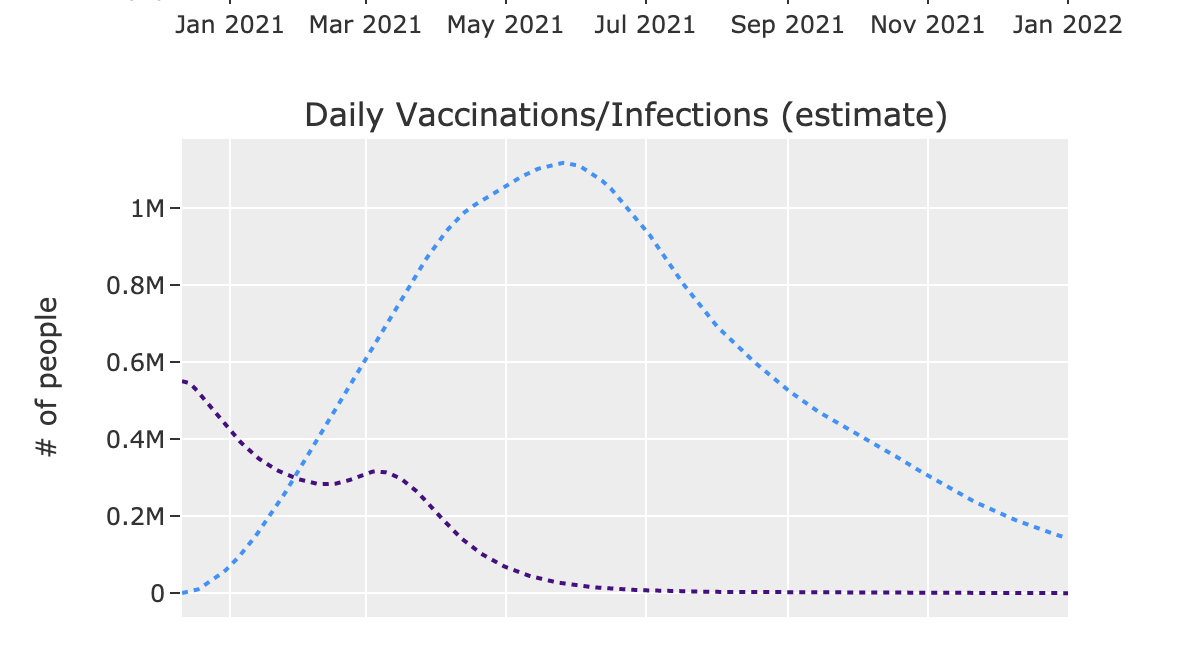
Many people are unaware that the COVID-19 vaccine has significantly more side effects than the flu vaccine. I hope to see more honest discussions regarding this.
Props to @Cat_Ho for her realistic, data-centric reporting of this issue. It's much needed.
sfchronicle.com/health/article…
Props to @Cat_Ho for her realistic, data-centric reporting of this issue. It's much needed.
sfchronicle.com/health/article…

Some notable numbers from the vaccine trial participants after the 2nd dose (age 16-55):
- 16% developed a fever vs 0% for the placebo
- 59%/52% had fatigue/headache vs 23/24% for placebo
- 45% took pain medication vs 13% for placebo
Those age 55+ have a slightly lower rate.
- 16% developed a fever vs 0% for the placebo
- 59%/52% had fatigue/headache vs 23/24% for placebo
- 45% took pain medication vs 13% for placebo
Those age 55+ have a slightly lower rate.
In comparison, roughly 1% of flu shot participants report a fever (16x lower), and ~20% report fatigue/headache (2x lower).
On top of that, COVID-19 vaccine participants have to go through this twice. Though the side effects are milder after dose #1.
On top of that, COVID-19 vaccine participants have to go through this twice. Though the side effects are milder after dose #1.
https://twitter.com/JesseOSheaMD/status/1337091268866953219
1% of trial participants developed a high fever (102-104°F). If we vaccinate 200 million people, that means 2 million will develop a high fever.
This is just for the Pfizer vaccine. Preliminary data suggests Moderna's vaccine may have a higher rate of severe side effects.
This is just for the Pfizer vaccine. Preliminary data suggests Moderna's vaccine may have a higher rate of severe side effects.
That said, these side effects are perfectly normal for a vaccine.
The Shingrix vaccine for shingles has a significantly higher rate of side effects than the COVID-19 vaccine. It is recommended by the CDC for those age 50+, and millions get it yearly.
The Shingrix vaccine for shingles has a significantly higher rate of side effects than the COVID-19 vaccine. It is recommended by the CDC for those age 50+, and millions get it yearly.
https://twitter.com/JesseOSheaMD/status/1337097046302593025
Many people are under the false impression that this vaccine is similar to a flu shot.
But when news inevitably spreads of the side effects (and having to endure them twice), vaccine acceptance may nose-dive.
I think it's better to be upfront and transparent about this.
But when news inevitably spreads of the side effects (and having to endure them twice), vaccine acceptance may nose-dive.
I think it's better to be upfront and transparent about this.
I suspect one reason the side effects aren't being as widely talked about is that there is a fear that it will feed vaccine hesitancy.
But an overwhelming majority of people won't receive the vaccine for months. This issue *will* come up eventually.
The elephant is in the room.
But an overwhelming majority of people won't receive the vaccine for months. This issue *will* come up eventually.
The elephant is in the room.
Mask acceptance is a big issue because people felt like the public health messaging overpromised their effectiveness. Similar issue with lockdowns.
Are we making the same mistake with the vaccine? Downplaying the side effects may backfire and hurt public confidence later on.
Are we making the same mistake with the vaccine? Downplaying the side effects may backfire and hurt public confidence later on.
I think it make more sense to highlight the side effects as much as possible *now*, when demand for the vaccine greatly outnumber supply.
Set realistic expectations & exhaust the debate as much as possible now, rather than wait until spring, when people actually have the option.
Set realistic expectations & exhaust the debate as much as possible now, rather than wait until spring, when people actually have the option.
In my opinion, in a few months, you'd rather have people think "oh it's not as bad as they said it was" than "it's worse than they said - I feel deceived."
I imagine the former would lead to a higher vaccine acceptance than the latter.
But I'm not a public messaging expert.
I imagine the former would lead to a higher vaccine acceptance than the latter.
But I'm not a public messaging expert.
With that said, let's put things to perspective:
While the COVID-19 vaccine may be more unpleasant than the flu vaccine, severe side effects are very low (<5%). And it's a lot better than actually getting COVID-19. Or seeing our loved ones get it.
The vaccine will save lives.
While the COVID-19 vaccine may be more unpleasant than the flu vaccine, severe side effects are very low (<5%). And it's a lot better than actually getting COVID-19. Or seeing our loved ones get it.
The vaccine will save lives.
The @sfchronicle headline sums it up best: "The coronavirus vaccine comes with more side effects than a flu shot. Experts urge people to get it anyway."
For those that are interested, the source for all of the side effects can be found in this paper: nejm.org/doi/full/10.10…
For those that are interested, the source for all of the side effects can be found in this paper: nejm.org/doi/full/10.10…
• • •
Missing some Tweet in this thread? You can try to
force a refresh











